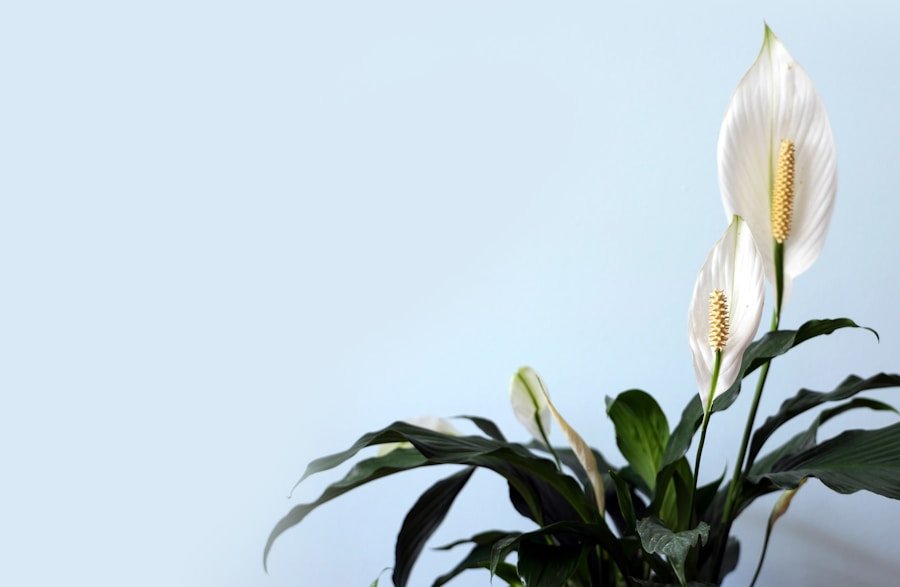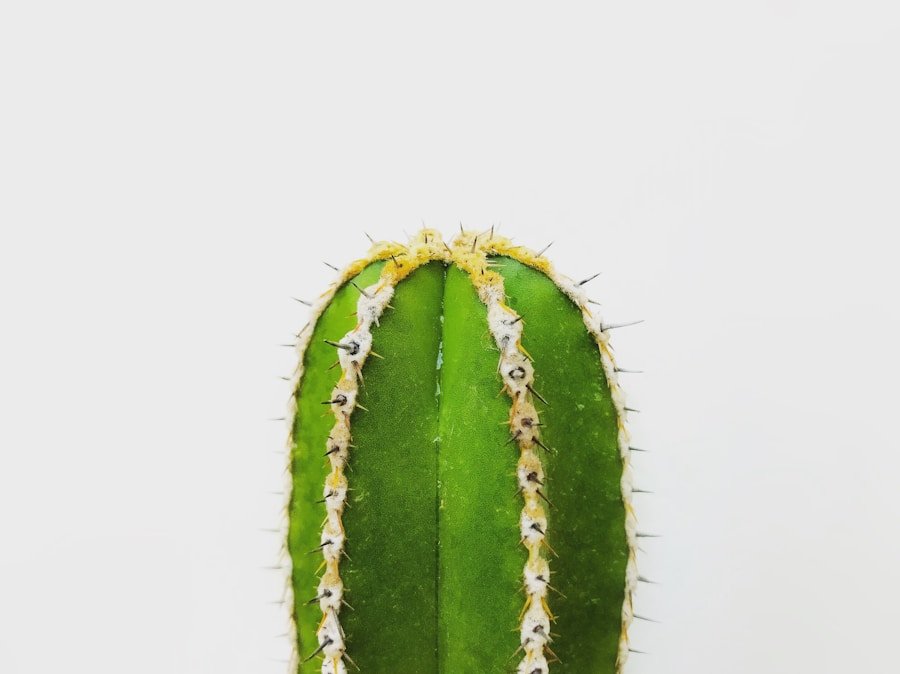When creating a hanging garden in your home, the location is a crucial factor to consider. Opt for a spot that receives an abundance of natural light, as most plants flourish in sunlight. Aim for a location that receives at least six hours of direct sunlight daily.
If you’re planning an indoor hanging garden, position it near a window to maximize sun exposure. Additionally, ensure good air circulation in the chosen location to prevent mold and mildew growth on your plants. Finally, consider the weight of your hanging garden and select a location that can support the weight of the plants and the hanging system.
When selecting a location for your hanging garden, it’s essential to consider the local climate and temperature. Different plants thrive in various environments, with some preferring warm, humid conditions and others favoring cooler, drier settings. Take into account the microclimate of the area where you plan to hang your garden and choose plants well-suited to those conditions.
If you live in an area with extreme temperatures, take extra precautions to protect your hanging garden. This may involve using a shade cloth or bringing your garden indoors during extreme weather to maintain plant health and happiness.
Key Takeaways
- Choose a location with ample sunlight and good air circulation for your hanging garden
- Select plants that are suitable for hanging gardens, such as trailing or cascading varieties
- Use sturdy hooks, brackets, or hanging baskets to create a support system for your hanging garden
- Water your hanging garden regularly and provide proper care based on the specific needs of your plants
- Design your hanging garden with a mix of colors, textures, and heights for visual appeal
Selecting the best plants for a hanging garden
Considering Light and Space
When choosing plants for your hanging garden, it’s essential to consider the size of your space and the amount of light it receives. Some plants require more sunlight than others, so be sure to choose plants that are well-suited to the light conditions in your chosen location.
Size, Weight, and Maintenance
In addition to light, consider the size and weight of the plants you choose. You’ll want to select plants that are small and lightweight enough to be supported by your hanging system. It’s also crucial to think about their water and maintenance needs. Some plants require more frequent watering and care than others, so be sure to choose plants that are well-suited to your schedule and lifestyle.
Visual Appeal and Variety
When selecting plants for your hanging garden, don’t forget to think about the visual appeal of the plants you choose. Consider selecting a variety of plants with different colors, textures, and shapes to create a visually interesting and dynamic hanging garden.
Creating a sturdy support system for your hanging garden
Once you’ve chosen the perfect location and selected the best plants for your hanging garden, it’s time to create a sturdy support system for your plants. There are a variety of options for hanging gardens, including hooks, brackets, and trellises. When choosing a support system for your hanging garden, be sure to select one that is strong enough to support the weight of your plants and is well-suited to the size and layout of your space.
Additionally, consider the material of the support system you choose. Metal hooks and brackets are durable and long-lasting, while wooden trellises can add a natural and rustic touch to your hanging garden. When creating a support system for your hanging garden, it’s important to consider the weight distribution of your plants.
Be sure to hang your plants evenly to prevent any one area from becoming too heavy and causing damage to your support system. Additionally, consider the spacing of your plants and how they will grow over time. Leave enough space between each plant to allow for growth and ensure that they have plenty of room to thrive.
Lastly, be sure to secure your support system properly to prevent any accidents or damage to your plants or surrounding area.
Properly watering and caring for your hanging garden
| Steps to Create a Hanging Garden in Your Home |
|---|
| 1. Choose the right location with adequate sunlight |
| 2. Select suitable hanging planters or baskets |
| 3. Use lightweight potting mix for the plants |
| 4. Water the plants regularly and ensure proper drainage |
| 5. Consider using a drip irrigation system for easy maintenance |
| 6. Choose a variety of plants for visual interest and diversity |
| 7. Keep an eye on the weight of the hanging garden to avoid damage |
Properly watering and caring for your hanging garden is essential to ensuring that your plants stay healthy and happy. When it comes to watering your hanging garden, it’s important to consider the specific needs of each plant. Some plants require more frequent watering than others, so be sure to research the individual needs of each plant in your garden.
Additionally, consider the type of soil and drainage in your hanging garden. Be sure to use well-draining soil and pots with drainage holes to prevent water from pooling and causing root rot. In addition to watering, it’s important to regularly check on the health of your plants and provide them with proper care.
This may include fertilizing your plants, pruning them as needed, and keeping an eye out for any signs of pests or disease. Be sure to research the specific care needs of each plant in your hanging garden and provide them with the proper care and attention they need to thrive. Additionally, consider the environmental conditions in your chosen location and make any necessary adjustments to ensure that your plants stay healthy and happy.
Designing a visually appealing hanging garden
Designing a visually appealing hanging garden is an important aspect of creating a beautiful and inviting space in your home. When it comes to designing your hanging garden, consider the layout and arrangement of your plants. Think about how different colors, textures, and shapes can work together to create a visually interesting and dynamic display.
Consider using a variety of different plants with different heights and growth habits to create depth and dimension in your hanging garden. Additionally, think about incorporating decorative elements such as colorful pots, decorative hooks, or trellises to add visual interest to your space. In addition to the layout and arrangement of your plants, consider the overall aesthetic of your hanging garden.
Think about the style and theme you want to achieve and select plants and decorative elements that complement that vision. Whether you prefer a modern and minimalist look or a lush and tropical feel, there are endless possibilities for creating a visually appealing hanging garden that reflects your personal style. Lastly, consider incorporating elements such as lighting or water features into your hanging garden to create a truly unique and inviting space in your home.
Maintaining and pruning your hanging garden
Regular Maintenance Tasks
Regular maintenance involves removing dead or damaged leaves, flowers, or stems from your plants, as well as regularly checking for signs of pests or disease. It’s essential to research the specific maintenance needs of each plant in your hanging garden and provide them with the proper care they require.
The Importance of Pruning
In addition to regular maintenance, pruning is a crucial aspect of caring for your hanging garden. Pruning promotes healthy growth and encourages flowering in many plants. It’s essential to research the specific pruning needs of each plant in your hanging garden and provide them with the proper care they require.
Pruning Tips and Techniques
When pruning, consider using sharp pruning shears or scissors to make clean cuts and prevent any damage to your plants. This will help ensure your plants continue to thrive and look their best.
Troubleshooting common issues with hanging gardens
While creating a hanging garden can be a rewarding experience, it’s important to be prepared for any common issues that may arise along the way. One common issue with hanging gardens is overwatering or underwatering. Be sure to research the specific water needs of each plant in your hanging garden and adjust your watering schedule as needed.
Additionally, be on the lookout for signs of pests or disease in your plants and take action as soon as possible to prevent any issues from spreading. Another common issue with hanging gardens is inadequate support or improper installation of the support system. Be sure to carefully follow the instructions for installing your support system and ensure that it is strong enough to support the weight of your plants.
Additionally, be sure to regularly check on the condition of your support system and make any necessary adjustments or repairs as needed. In conclusion, creating a hanging garden in your home can be a fun and rewarding project that allows you to bring nature indoors and create a beautiful and inviting space in your home. By carefully choosing the right location for your hanging garden, selecting the best plants for your space, creating a sturdy support system, properly watering and caring for your plants, designing a visually appealing display, maintaining and pruning your garden, and being prepared for any common issues that may arise, you can create a stunning hanging garden that brings joy and beauty into your home for years to come.
With careful planning and attention to detail, you can create a beautiful hanging garden that reflects your personal style and enhances the beauty of your home.
FAQs
What is a hanging garden?
A hanging garden is a type of garden where plants are suspended in the air, typically using containers or baskets. This allows for vertical gardening and can be a great way to add greenery to small spaces.
What are the benefits of creating a hanging garden in your home?
Creating a hanging garden in your home can help improve air quality, reduce stress, and add visual interest to your space. It also allows you to grow plants in areas where traditional gardening may not be possible, such as small apartments or balconies.
What are some popular plants for a hanging garden?
Popular plants for hanging gardens include trailing or cascading plants such as pothos, spider plants, ivy, ferns, and succulents. These plants are well-suited for hanging containers and can thrive in a variety of indoor environments.
How do you create a hanging garden in your home?
To create a hanging garden in your home, you will need to choose the right containers, select the appropriate plants, and ensure proper watering and light conditions. It’s important to consider the weight of the containers and the strength of the support system when hanging the garden.
What are some tips for maintaining a hanging garden?
Some tips for maintaining a hanging garden include regularly checking the moisture levels of the soil, providing adequate light for the plants, and periodically fertilizing the plants to ensure healthy growth. It’s also important to prune and trim the plants as needed to maintain their shape and prevent overgrowth.








1 Comment